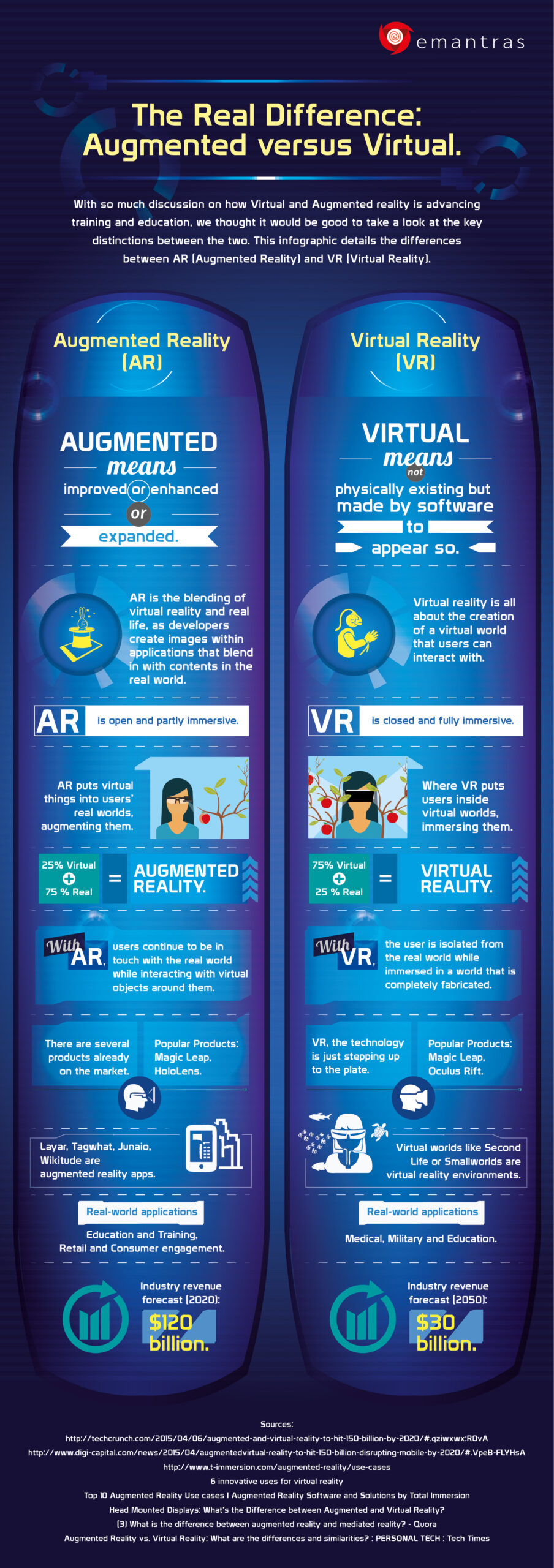Tag: virtual
-

Infographic: Augmented Reality vs Virtual Reality
With both Augmented Reality and Virtual Reality growing in popularity, it is important to understand the difference between the two. Augmented Reality blends virtual reality with real life, putting virtual items into real worlds. AR consists of 25% virtual and 75% real environments, making it only partially immersive. Users are able to still be in…
-

Infographic – The History and Future of Augmented Reality
Unlike Virtual Reality, Augmented Reality does not immerse its user into a new environment; it enhances one’s reality by overlaying digital information onto things being viewed on a digital device. Though AR is rising in popularity in 2016, variations of it have been around since 1957 with Mortin Helig’s Sensorama machine as one such example.…

